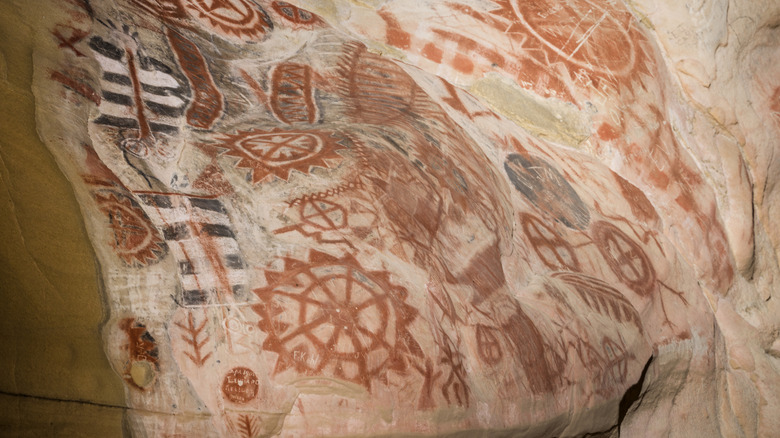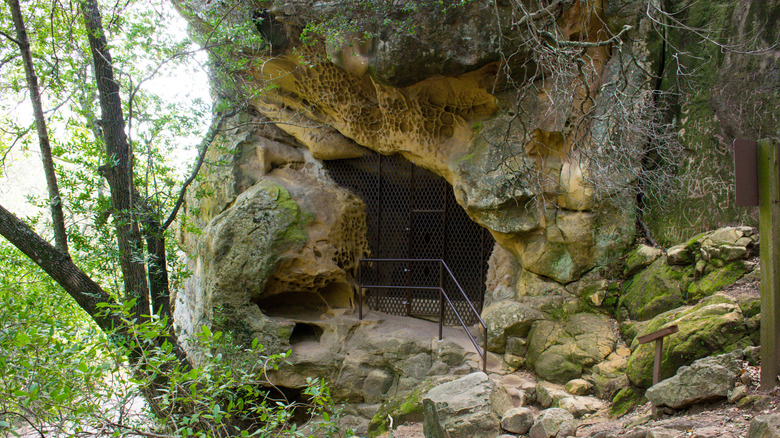
Time portals exist. Okay, maybe not in a literal sense. More like well-preserved slices of history showing remnants of a long-lost past, found at various locations worldwide. For example, Njardarheimr offers a breathtaking, historically accurate Viking village in Norway. One can find a similarly disorienting experience hidden in California's Santa Ynez Mountains, where the Chumash Painted Cave State Historic Park houses incredible Native American artwork. The exquisite (and free) glimpse into a distant
past juxtaposes the hardscrabble existence that birthed those likely religious pictographs with the luxurious Santa Barbara, an iconic beach town dubbed the "American Riviera."
You're best off driving to Painted Cave from Santa Barbara, which will take about 20 minutes. The winding, slim 12-mile mountain road leading to the cave can be challenging, especially as clouds descend the mountainside and reduce visibility. Look out for itch-inducing plants as well, including poison oak, along the dirt trail leading to the cave. The entrance itself seems lifted from a movie set, with the sponge-like crevices surrounding the mouth offering a unique backdrop for pictures. The thick canopy of trees creates a deep shade. Combined with the gated entrance, you may need a flashlight to get a good look at the interior.
Read more: The 14 Best Botanical Gardens In America, According To Reddit
The Sacred History Within Painted Cave

The black, white, and red symbols lining the cave's walls showcase some of the best-preserved pictographs dating back to at least the 1600s, or perhaps earlier. The mix of geometric shapes, celestial scenery, and human and animal-like figures is transfixing in its scope and beauty. Their meaning, however, is lost to a painful history that befell many native tribes once Europeans arrived. The metal gates at the Painted Cave's entrance are a part of that chronicle, designed to stop mindless vandals from further damaging the interior walls. While the cave painting's meaning is lost, Alaxulux'en, as the Chumash call the cave, retains its significance.
The Chumash, once one of the more prominent Indigenous groups in California, lived in the area for 13,000 years and likely used Painted Cave for several centuries. Archaeological findings suggest the Painted Cave was a summer and fall ceremonial destination for the tribe until European settlers ended the practice in the 1700s. Several theories have emerged trying to explain the cave drawings' significance, and the varying styles suggest a practice that changed over time.
The passage of time, however, also remains the Painted Cave's biggest enemy. Vandalism aside, wind erosion is creating a gap in the cave drawings along the sandstone ceilings. With all ceremonial practices discontinued and forgotten, conservationists have created a digital 3D replica of its interior to help conservators and educators. Be sure to leave the cave as you found it during your visit. Once you've got a taste for cave drawings, check out any of the other awe-inspiring destinations to see ancient rock art in the United States.
Ready to discover more hidden gems and expert travel tips? Subscribe to our free newsletter for access to the world's best-kept travel secrets.
Read the original article on Islands.












